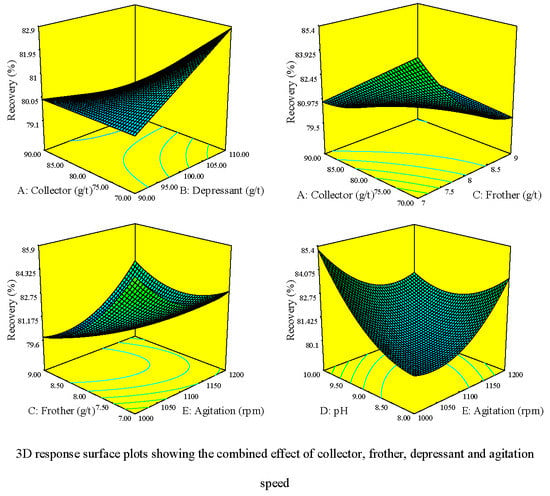Parametric Optimization in Rougher Flotation Performance of a Sulfidized Mixed Copper Ore
Abstract
1. Introduction
2. Theoretical Background
3. Experimental Procedure
3.1. Material and Grinding and Sulfidization Processes
3.2. Flotation Experiments
4. Results and Discussions
4.1. Design of Experiments
4.2. Model Construction for Cu Recovery
4.3. Model Validation and Statistical Evaluation
4.4. Influence of Factors and Their Interactions on Recovery
4.5. Process Optimization
5. Conclusions
- A quadratic mathematical model (with R2 of 0.8097) was developed to predict the copper recovery as a function of influential factors after validation and confirmation through several strong methods.
- ANOVA indicated that the linear effects of collector, frother and pH, the interaction effects of frother with collector and agitation rate and pH with agitation rate, the quadratic effects of frother, pH and agitation were significant on the copper recovery. Also, the significance degree of factors was obtained as frother dosage > agitation rate2 > frother × agitation speed > pH × agitation speed > frother dosage2 > pH2 > collector × frother > collector dosage > pH.
- According to the 3D response surface graphs: (a) the recovery of copper improved about 2.81% by increasing the amount of depressant (sodium silicate) at low levels of collector dosage (70 g/t); (b) the copper recovery decreased by increasing the amount of dithiophosphate collector at high levels of frother (about 4.44%) and conversely at low values, the increase of the collector value to 90 g/t had no significant effect on the recovery; (c) changing the collector dosage had limited effects on the floatability of copper in the range tested and the recovery reduced with enhancing the value of collector dosage; (d) at low values of agitation rate, raising the pH increased significantly the copper recovery, while at high values of agitation, a slight reduction occurred in the recovery.
- Using an experimental design and goal function approach, the optimal levels of factors were determined to be ~70 g/t for collector, 110 g/t for depressant, 7 g/t for frother, 10 for pulp pH and 1000 rpm for agitation rate with a prediction of 92.75% copper recovery. Under these conditions, the desirability of the optimal condition was found to be 1. Confirmatory experiments were also conducted to assess the model suggested under the optimal condition predicted, and the results showed that the developed model was reliable and helpful for predicting the copper recovery.
Author Contributions
Funding
Acknowledgments
Conflicts of Interest
Nomenclature
| RSM | Response surface methodology |
| CCD | Central composite design |
| DOE | Design of experiment |
| BBD | Box–Behnken design |
| DTP | Di-ethyldithiophosphate |
| XRD | X-ray diffraction |
| XRF | X-ray fluorescence |
| MIBC | Methyl isobutyl carbinol |
| R | Recovery |
| C1 | Dry weight of concentrate |
| c | % grade of concentrate |
| F | Dry weight of feed |
| f | % grade of feed |
| η2 | Conformity factor |
| ANOVA | Analysis of variance |
| MANOVA | Multidimensional analysis of variance |
| p-value | Probability value (significance level) |
| R2 | Coefficient of determination |
| SS | Sum of squares |
| n and k | Number of factors |
| p | Fraction of the number of factors |
| nc | Number of central runs |
| 2n | Axial runs |
| α | Star (axial) point |
| Y | Predicted response |
| β0 | Constant term |
| βi | linear coefficient |
| xi | Independent variable |
| βii | Quadratic coefficient |
| βij | Interaction coefficient |
| ε | Error |
| xi | Dimensionless coded value |
| Xi | Actual value |
| ΔX | Step change value |
| Cu | Copper |
| MS | Mean squares |
| DF | Degrees of Freedom |
| Std. Dev. | Standard deviation |
| PRESS | Predicted residual error sum of squares |
References
- Ekman Nilsson, A.; Macias Aragonés, M.; Arroyo Torralvo, F.; Dunon, V.; Angel, H.; Komnitsas, K.; Willquist, K. A Review of the carbon footprint of Cu and Zn production from primary and secondary sources. Minerals 2017, 7, 168. [Google Scholar] [CrossRef]
- Davenport, W.G.; King, M.; Schlesinger, M.; Biswas, A.K. Extractive Metallurgy of Copper; Elsevier: Oxford, UK, 2002; pp. 307–325. [Google Scholar]
- Rahman, R.M.; Ata, S.; Jameson, G.J. The effect of flotation variables on the recovery of different particle size fractions in the froth and the pulp. Int. J. Miner. Process. 2012, 106, 70–77. [Google Scholar] [CrossRef]
- Maldonado, M.; Araya, R.; Finch, J. An overview of optimizing strategies for flotation banks. Minerals 2012, 2, 258–271. [Google Scholar] [CrossRef]
- Masdarian, M.; Azizi, A.; Bahri, Z. Mechanochemical sulfidization of a mixed oxide-sulphide copper ore by co-grinding with sulfur and its effect on the flotation efficiency. Chin. J. Chem. Eng. 2020, 8, 743–748. [Google Scholar] [CrossRef]
- Azizi, A. Optimization of rougher flotation parameters of the Sarcheshmeh copper ore using a statistical technique. J. Disper. Sci. Technol. 2015, 36, 1066–1072. [Google Scholar] [CrossRef]
- Hassanzadeh, A.; Azizi, A.; Kouachi, S.; Karimi, M.; Celik, M.S. Estimation of flotation rate constant and particle-bubble interactions considering key hydrodynamic parameters and their interrelations. Miner Eng. 2019, 141, 105836. [Google Scholar] [CrossRef]
- Lee, K.; Archibald, D.; McLean, J.; Reuter, M.A. Flotation of mixed copper oxide and sulphide minerals with xanthate and hydroxamate collectors. Miner. Eng. 2009, 22, 395–401. [Google Scholar] [CrossRef]
- Yin, W.-Z.; Sun, Q.-Y.; Li, D.; Tang, Y.; Fu, Y.-F.; Yao, J. Mechanism and application on sulphidizing flotation of copper oxide with combined collectors. Trans. Nonferrous Met. Soc. China. 2019, 29, 178–185. [Google Scholar] [CrossRef]
- Conejeros, V.; Pérez, K.; Jeldres, R.I.; Castillo, J.; Hernández, P.; Toro, N. Novel treatment for mixed copper ores: Leaching ammonia-Precipitation-Flotation (L.A.P.F.). Miner. Eng. 2020, 149, 106242. [Google Scholar] [CrossRef]
- Zare, A.; Azizi, A.; Karamoozian, M. An investigation into the recovery of oxide copper from a complex copper ore using sulphidisation technique and hydroxamate and potassium amyl xanthate collectors. Geosys. Eng. 2020, 23, 43–50. [Google Scholar] [CrossRef]
- Hoang, D.H.; Hassanzadeh, A.; Peuker, U.A.; Rudolph, M. Impact of flotation hydrodynamics on the optimization of fine-grained carbonaceous sedimentary apatite ore beneficiation. Powder Technol. 2019, 345, 223–233. [Google Scholar]
- Bulatovic, S.M. Handbook of Flotation Reagents Chemistry, Theory and Practice: Flotation of Sulfide Ores; Elsevier Science & Technology: Amsterdam, The Netherlands, 2007. [Google Scholar]
- Ucurum, M.; Bayat, O. Effects of operating variables on modified flotation parameters in the mineral separation. Sep. Purif. Technol. 2007, 55, 173–181. [Google Scholar] [CrossRef]
- Hassanzadeh, A.; Karakas, F. Recovery improvement of coarse particles by stage addition of reagents in industrial copper flotation circuits. J. Disper. Sci. Technol. 2017, 38, 309–316. [Google Scholar] [CrossRef]
- Zanin, M.; Wightman, E.; Grano, S.R.; Franzidis, J.P. Quantifying contributions to froth stability in porphyry copper plants. Int. J. Miner. Process. 2009, 91, 19–27. [Google Scholar] [CrossRef]
- Vazifeh, Y.; Jorjani, E.; Bagherian, A. Optimization of reagent dosages for copper flotation using statistical technique. Trans. Nonferrous. Met. Soc. China. 2010, 20, 2371–2378. [Google Scholar] [CrossRef]
- Azizi, A. Influence of collector dosage and pulp chemistry on copper flotation. Geosys. Eng. 2014, 17, 311–316. [Google Scholar] [CrossRef]
- Hassanzadeh, A.; Hassas, B.V.; Kouachi, S.; Brabcova, Z.; Çelik, M.S. Effect of bubble size and velocity in chalcopyrite flotation. Colloids. Surf. A: Physicochem. Eng. Aspects. 2016, 498, 258–267. [Google Scholar] [CrossRef]
- Agheli, S.; Hassanzadeh, A.; Vaziri Hassas, B.; Hasanzadeh, M. Effect of pyrite content of feed and configuration of locked particles on rougher flotation of copper in low and high pyritic ore types. Int. J. Mining. Sci. Technol. 2018, 28, 167–176. [Google Scholar] [CrossRef]
- Singh, A.; Louw, J.J.; Hulbert, D.G. Flotation stabilization and optimization. J. South. Afr. Inst. Min. Metall. 2003, 103, 581–588. [Google Scholar]
- Radmehr, V.; Shafaei, S.Z.; Noaparast, M.; Abdollahi, H. Optimizing flotation circuit recovery by effective stage arrangements: A case study. Minerals 2018, 8, 417. [Google Scholar] [CrossRef]
- Dhar, P.; Thornhill, M.; Rao Kota, H. Comparison of single and mixed reagent systems for flotation of copper sulphides from Nussir ore. Miner. Eng. 2019, 142, 105930. [Google Scholar] [CrossRef]
- Hangone, G.; Bradshaw, D.; Ekmekci, Z. Flotation of a copper sulphide ore from Okiep using thiol collectors and their mixtures. J. South. Afr. Inst. Min. Metall. 2005, 105, 199–206. [Google Scholar]
- Asadi, M.; Soltani, F.; Tavakoli Mohammadi, M.R.; Khodadadi Darban, A.; Abdollahy, M. A successful operational initiative in copper oxide flotation: Sequential sulphidisation-flotation technique. Physicochem. Probl. Miner. Process. 2019, 55, 356–369. [Google Scholar]
- Tijsseling, L.T.; Dehaine, Q.; Rollinson, G.K.; Glass, H.J. Flotation of mixed oxide sulphide copper-cobalt minerals using xanthate, dithiophosphate, thiocarbamate and blended collectors. Miner. Eng. 2019, 138, 246–256. [Google Scholar] [CrossRef]
- Asghari, M.; Nakhaei, F.; VandGhorbany, O. Copper recovery improvement in an industrial flotation circuit: A case study of Sarcheshmeh copper mine. Energ. Source. Part. A 2019, 41, 761–778. [Google Scholar] [CrossRef]
- Ghodrati, S.; Nakhaei, F.; VandGhorbany, O.; Hekmati, M. Modeling and optimization of chemical reagents to improve copper flotation performance using response surface methodology. Energ. Source. Part. A 2020, 42, 1633–1648. [Google Scholar] [CrossRef]
- Ávila-Márquez, D.M.; Blanco-Flores, A.; Reyes-Domínguez, I.A.; Toledo-Jaldin, H.P.; Aguilar-Carrillo, J.; Cruz-Gaona, R. Copper sulfide flotation under acidic conditions using a xanthogen formate compound as collector: Adsorption studies and experimental design approach. Colloids Surf. A Physicochem. Eng. Asp. 2020, 585, 124032. [Google Scholar] [CrossRef]
- Moimane, T.; Plackowski, C.; Peng, Y. The critical degree of mineral surface oxidation in copper sulphide flotation. Miner. Eng. 2020, 145, 106075. [Google Scholar] [CrossRef]
- Nakhaei, F.; Mosavi, M.R.; Sam, A.; Vaghei, Y. Recovery and grade accurate prediction of pilot plant flotation column concentrate: Neural network and statistical techniques. Int. J. Miner. Process. 2012, 110–111, 140–154. [Google Scholar] [CrossRef]
- Montgomery, D.C. Design and Analysis of Experiments; John Wiley & Sons, Inc.: New York, NY, USA, 2001. [Google Scholar]
- Myers, R.H.; Montgomery, D.C. Response Surface Methodology: Process and Product Optimization Using Designed Experiments, 2nd ed.; John Wiley & Sons: New York, NY, USA, 2002. [Google Scholar]
- Hinkelman, K.; Kempthorne, O. Design and Analysis of Experiments; John Wiley & Sons: Hoboken, NJ, USA, 2005. [Google Scholar]
- Kincl, M.; Turk, S.; Vrecer, F. Application of experimental design methodology in development and optimisation of drug release method. Int. J. Pharm. 2005, 291, 39–49. [Google Scholar] [CrossRef]
- Simate, G.S.; Ndlovu, S.; Gericke, M. Bacterial leaching of nickel laterites using chemolithotrophic microorganisms: Process optimisation using response surface methodology and central composite rotatable design. Hydrometallurgy 2009, 98, 241–246. [Google Scholar] [CrossRef]
- Niaki, R.; Abazarpoor, A.; Halali, M.; Maarefvand, M.; Ebrahimi, G. Application of Response Surface Methodology and Central Composite Rotatable Design for Modeling and Optimization of Sulfuric and Nitric Leaching of Spent Catalyst. Russ. J. Non-ferrous. Metals. 2015, 56, 155–164. [Google Scholar] [CrossRef]
- Behera, S.K.; Meena, H.; Chakraborty, S.; Meikap, B.C. Application of response surface methodology (RSM) for optimization of leaching parameters for ash reduction from low-grade coal. Int. J. Mining. Sci. Technol. 2018, 28, 621–629. [Google Scholar] [CrossRef]
- Sahu, J.N.; Acharya, J.; Meikap, B.C. Response surface modeling and optimization of chromium (VI) removal from aqueous solution using Tamarind wood activated carbon in batch process. J. Hazard. Mater. 2009, 172, 818–825. [Google Scholar] [CrossRef] [PubMed]
- Rao, G.V.; Mohanty, S. Optimization of flotation parameters for enhancement of grade and recovery of phosphate from low-grade dolomitic rock phosphate ore from Jhamar kota. India. Miner. Metall. Process. 2002, 19, 145–160. [Google Scholar] [CrossRef]
- Aslan, N.; Fidan, R. Optimization of Pb flotation using statistical technique and quadratic programming. Sep. Purif. Technol. 2008, 62, 160–165. [Google Scholar] [CrossRef]
- Mehrabani, J.V.; Noaparast, M.; Mousavi, S.M.; Dehghan, R.; Ghorbani, A. Process optimization and modelling of sphalerite flotation from a low-grade Zn-Pb ore using response surface methodology. Sep. Purif. Technol. 2010, 72, 242–249. [Google Scholar] [CrossRef]
- Kwak, J.S. Application of Taguchi and response surface methodologies for geometric error in surface grinding process. Int. J. Mach. Tools. Manuf. 2005, 45, 327–334. [Google Scholar] [CrossRef]
- Awe, S.A.; Khoshkhoo, M.; Kruger, P.; Sandstrom, A. Modelling and process optimisation of antimony removal from a complex copper concentrate. Trans. Nonferrous. Met. Soc. China. 2012, 22, 675–685. [Google Scholar] [CrossRef]
- Bezera, M.A.; Santelli, R.E.; Oliveira, E.P.; Villar, L.S.; Escaleira, L.A. Review response surface methodology (RSM) as a tool for optimization in analytical chemistry. Talanta 2008, 76, 965–977. [Google Scholar] [CrossRef]
- Rakić, T.; Kasagić-Vujanović, I.; Jovanović, M.; Jančić-Stojanović, B.; Ivanović, D. Comparison of full factorial design, central composite design, and Box-Behnken design in chromatographic method development for the determination of fluconazole and its impurities. Anal. Lett. 2014, 47, 1334–1347. [Google Scholar] [CrossRef]
- Box, G.E.P.; Hunter, J.S. Multi-factor experimental design for exploring response surfaces. Ann. Math. Stat. 1957, 28, 195–241. [Google Scholar] [CrossRef]
- Asadi Kafshgari, L.; Ghorbani, M.; Azizi, A.; Agarwal, S.; Gupta, V.K. Modeling and optimization of Direct Red 16 adsorption from aqueous solutions using nanocomposite of MnFe2O4/MWCNTs: RSM-CCRD model. J. Mol. Liq. 2017, 233, 370–377. [Google Scholar] [CrossRef]
- Hassanzadeh, A.; Karakas, F. The kinetics modeling of chalcopyrite and pyrite, and the contribution of particle size and sodium metabisulfite to the flotation of copper complex ores. Particul. Sci. Technol. 2017, 15, 455–461. [Google Scholar] [CrossRef]
- Hassanzadeh, A. A survey on troubleshooting of closed-circuit grinding system. Can. Metall. Q. 2018, 57, 328–340. [Google Scholar] [CrossRef]
- Hassanzadeh, A.; Hoang, D.H.; Brockmann, M. Assessment of flotation kinetics modeling using information criteria; case studies of elevated-pyritic copper sulfide and high-grade carbonaceous sedimentary apatite ores. J. Disper. Sci. Technol. 2020, 41, 1083–1094. [Google Scholar] [CrossRef]
- Gholami, H.; Rezai, B.; Mehdilo, A.; Hassanzadeh, A.; Yarahmadi, M.R. Effect of microwave system location on floatability of chalcopyrite and pyrite in a copper ore processing circuit. Physicochem. Probl. Miner. Process. 2020, 56, 432–448. [Google Scholar] [CrossRef]
- Raykov, T.; Marcoulides, G.A. An Introduction to Applied Multivariate Statistics; Routledge: New York, NY, USA, 2008. [Google Scholar]
- Niedoba, T.; Pięta, P. Applications of ANOVA in mineral processing. Min. Sci. 2016, 23, 43–54. [Google Scholar]
- Niedoba, T.; Surowiak, A.; Pięta, P. A multidimensional analysis and modelling of flotation process for selected Polish lithological copper ore types. E3S Web Conf. 2017, 18, 1–6. [Google Scholar] [CrossRef]
- Jamróz, D.; Niedoba, T.; Pięta, P.; Surowiak, A. The use of neural networks in combination with evolutionary algorithms to optimise the copper flotation enrichment process. Appl. Sci. Basel 2020, 10, 3119. [Google Scholar] [CrossRef]
- Jorjani, E.; Barkhordari, H.R.; Tayebi Khorami, M.; Fazeli, A. Effects of aluminosilicate minerals on copper-molybdenum flotation from Sarcheshmeh porphyry ores. Miner. Eng. 2011, 24, 754–759. [Google Scholar] [CrossRef]
- Park, C.H.; Jeon, H.S. The effect of sodium silicate as pH modifier and depressantin the froth flotation of molybdenite ores. Mater. Trans. 2010, 51, 1367–1369. [Google Scholar] [CrossRef]
- Fuerstenau, M.C.; Miller, J.; Kuhn, M.C. Chemistry of Flotation, Society of Mining Engineers of the American Institute of Mining; Metallurgical and Petroleum Engineers, Inc.: New York, NY, USA, 1985. [Google Scholar]
- Shahcheraghi, S.H.; Abdollahy, M.; Khalesi, M.R.; Hossein, S.M. A study on the effect of some operating parameters on the flotation kinetics of copper sulfide minerals. In Proceedings of the XXVI International Mineral Processing Congress (IMPC), New Delhi, India, 24–28 September 2012. [Google Scholar]
- Dhar, P.; Thornhill, M.; Rao Kota, H. Investigation of copper recovery from a new copper ore deposit (Nussir) in northern Norway: Dithiophosphates and xanthate-dithiophosphate blend as collectors. Minerals 2019, 9, 146. [Google Scholar] [CrossRef]
- Roy, S.; Datta, A.; Rehani, S. Flotation of copper sulphide from copper smelter slag using multiple collectors and their mixtures. Int. J. Miner. Process. 2015, 143, 43–49. [Google Scholar] [CrossRef]
- Fornasiero, D.; Filippov, L.O. Innovations in the flotation of fine and coarse particles. J. Phys. Conf. Ser. 2017, 879, 012002. [Google Scholar] [CrossRef]
- Hassanzadeh, A.; Firouzi, M.; Albijanic, B.; Celik, M.S. A view on determination of particle–bubble encounter using analytical, experimental and numerical methods. Miner. Eng. 2018, 122, 296–311. [Google Scholar] [CrossRef]
- Somasundaran, P.; Wang, D.Z. Solution Chemistry: Minerals and Reagents; Elsevier Press: Amsterdam, The Netherlands, 2006. [Google Scholar]
- Liu, C.; Feng, Q.; Zhang, G. Effect of ammonium sulfate on the sulfidation flotation of malachite. Arch. Min. Sci. 2018, 63, 139–148. [Google Scholar]
- Gu, S.; Fu, B.; Ahn, J.W. Simultaneous removal of residual sulfate and heavy metals from spent electrolyte of lead-acid battery after precipitation and carbonation. Sustainability 2020, 12, 1263. [Google Scholar] [CrossRef]
- Fairthorne, G.; Fornasiero, D.; Ralston, J. Effect of oxidation on the collectorless flotation of chalcopyrite. Int. J. Miner. Process. 1997, 49, 31–48. [Google Scholar] [CrossRef]
- Grano, S.R.; Sollaart, M.; Skinner, W.; Prestidge, C.A.; Ralston, J. Surface modifications in the chalcopyrite–sulphite ion system, I. Collectorless flotation, XPS and dissolution study. Int. J. Miner. Process. 1997, 50, 1–26. [Google Scholar] [CrossRef]
- Grano, S.R.; Cnossen, H.; Skinner, W.; Prestidge, C.A.; Ralston, J. Surface modifications in the chalcopyrite-sulphite ion system, II. Dithiophosphate collector adsorption study. Int. J. Miner. Process. 1997, 50, 27–45. [Google Scholar] [CrossRef]
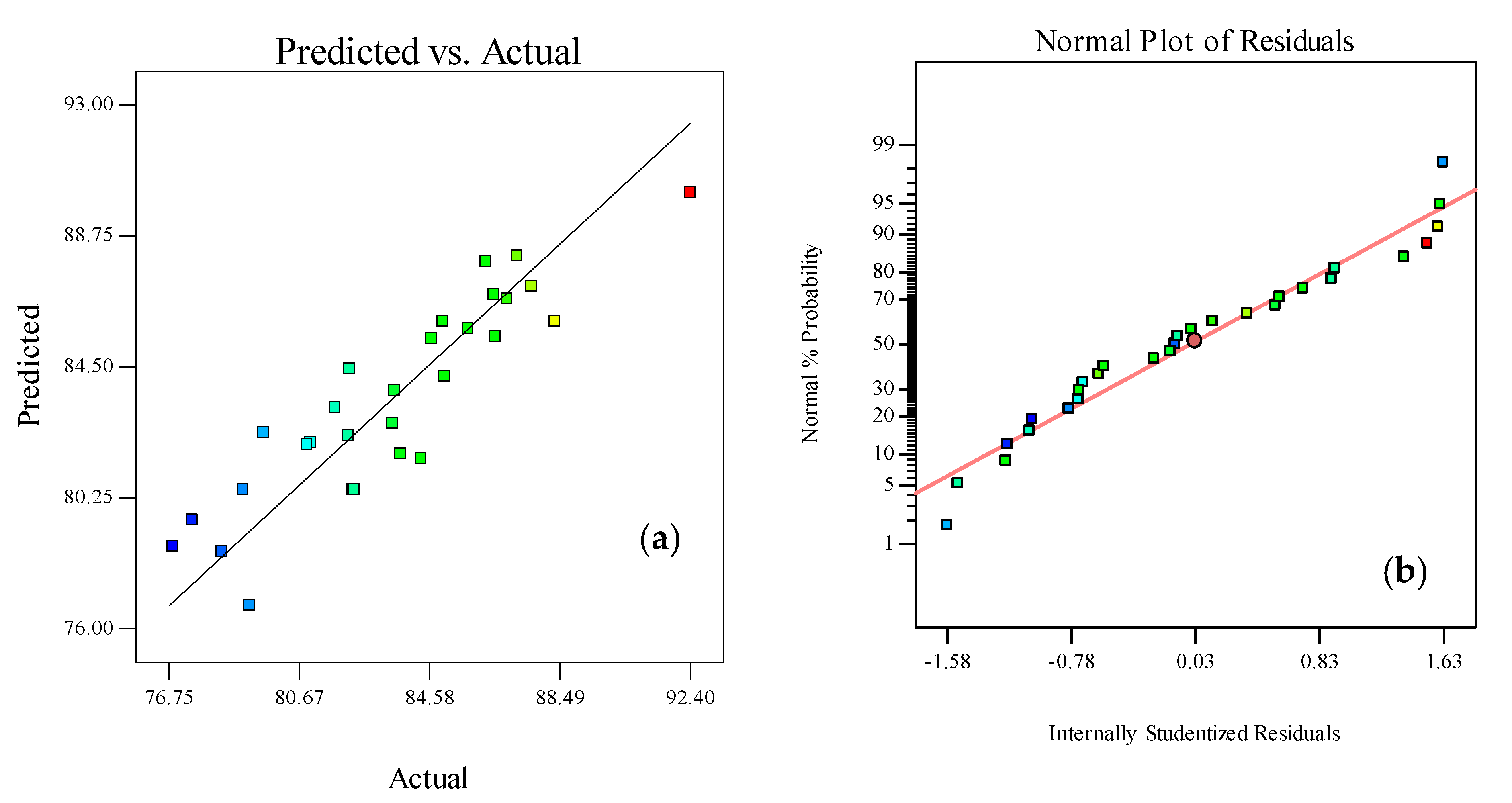
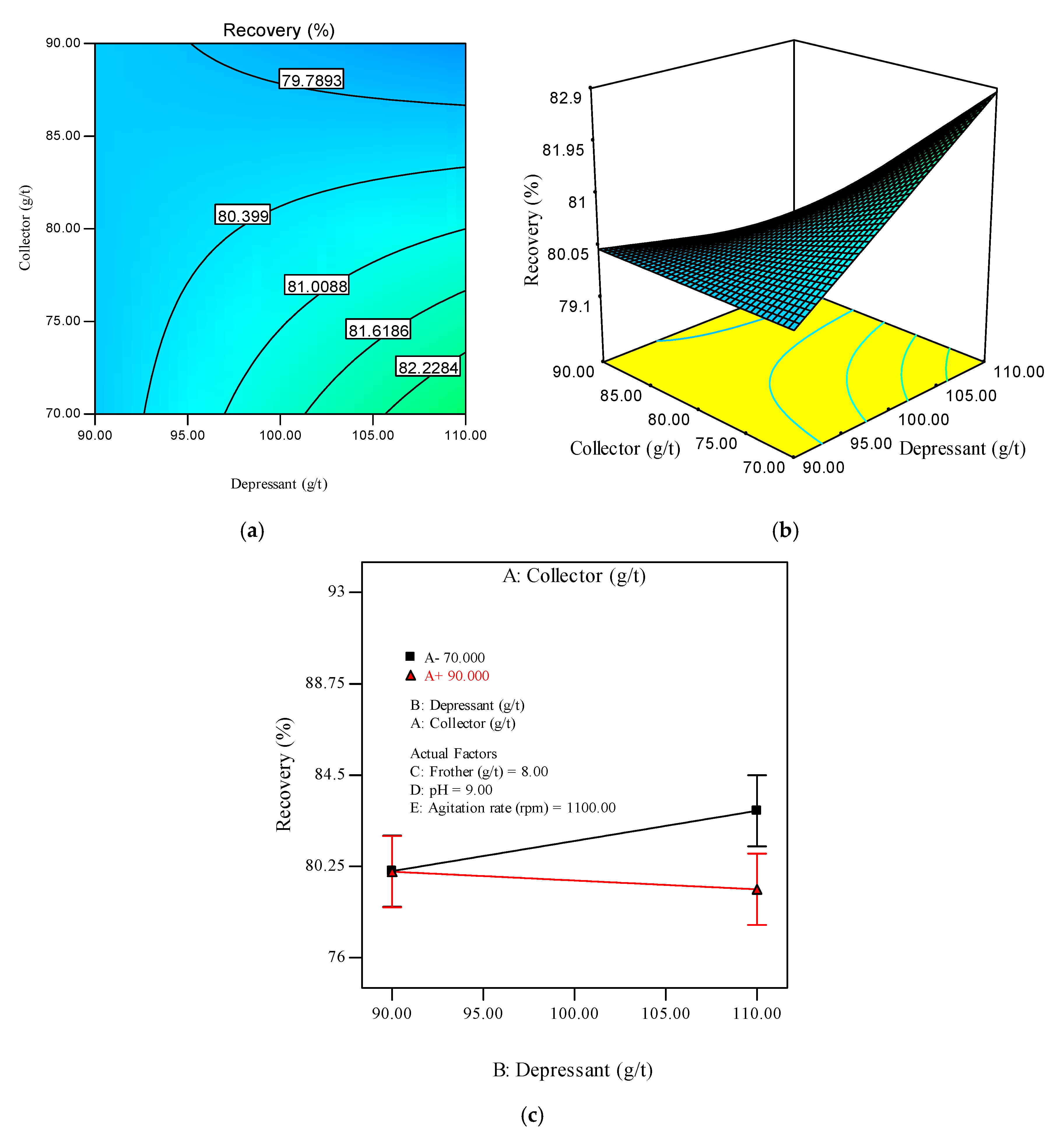
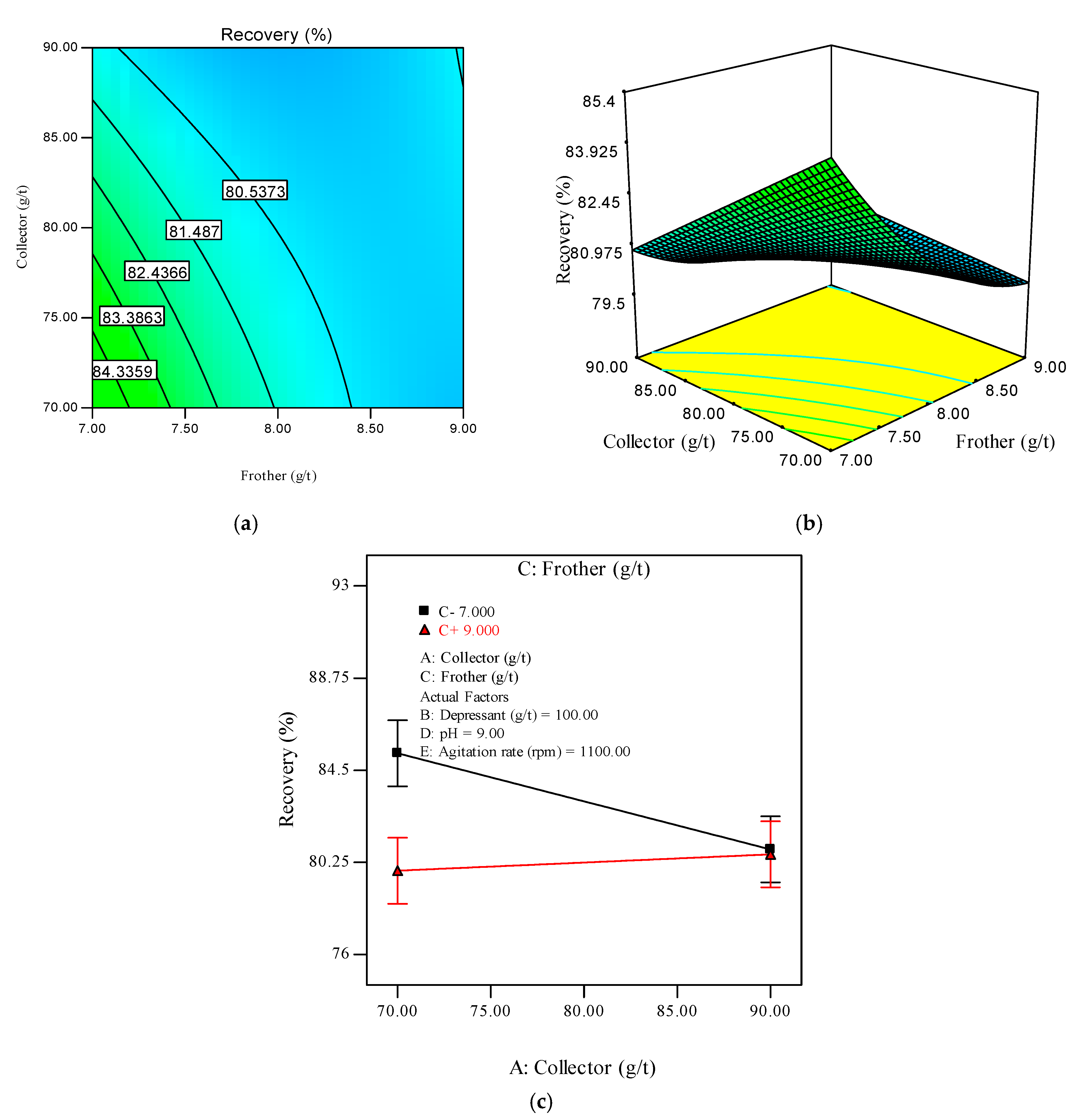
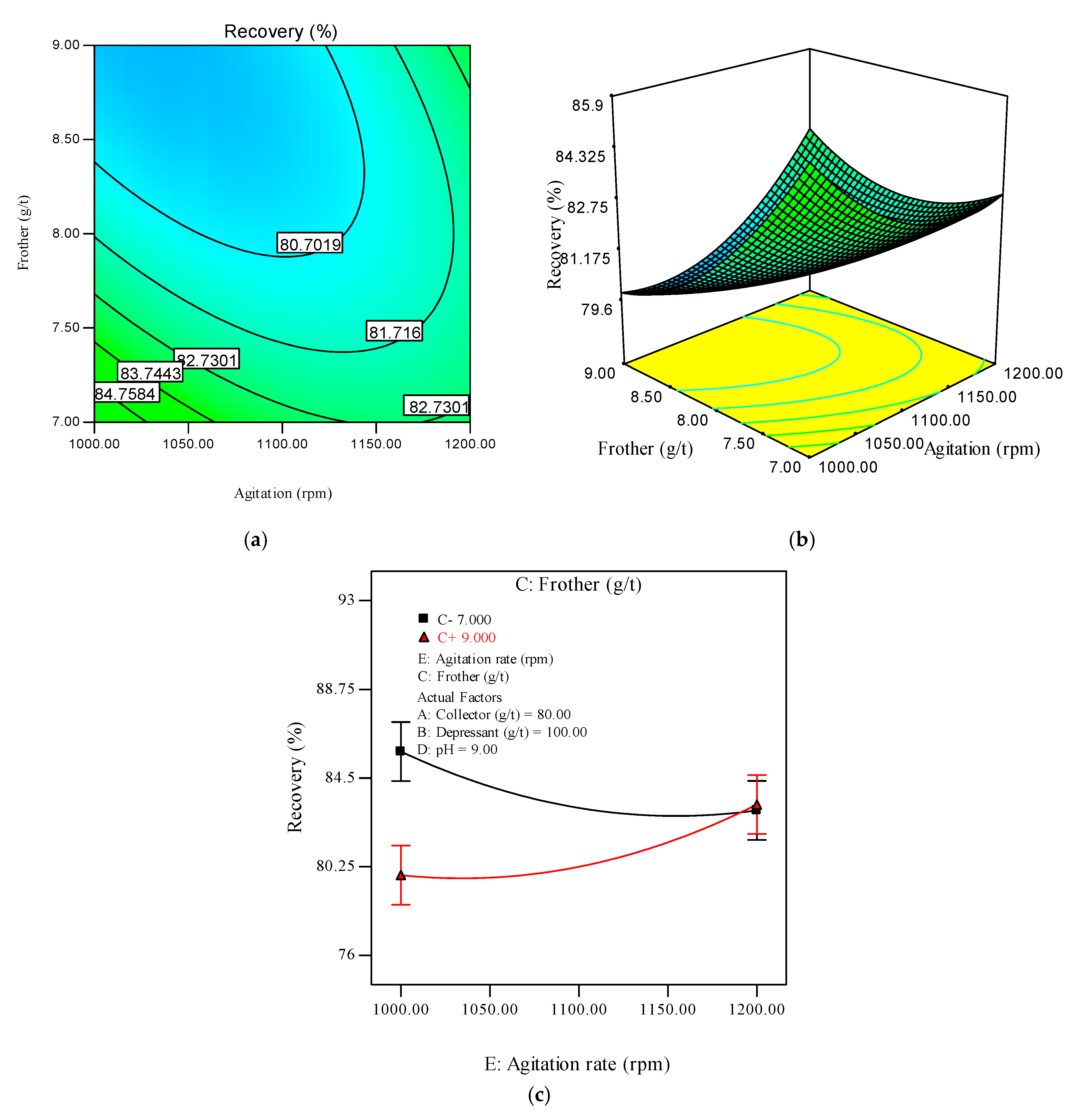
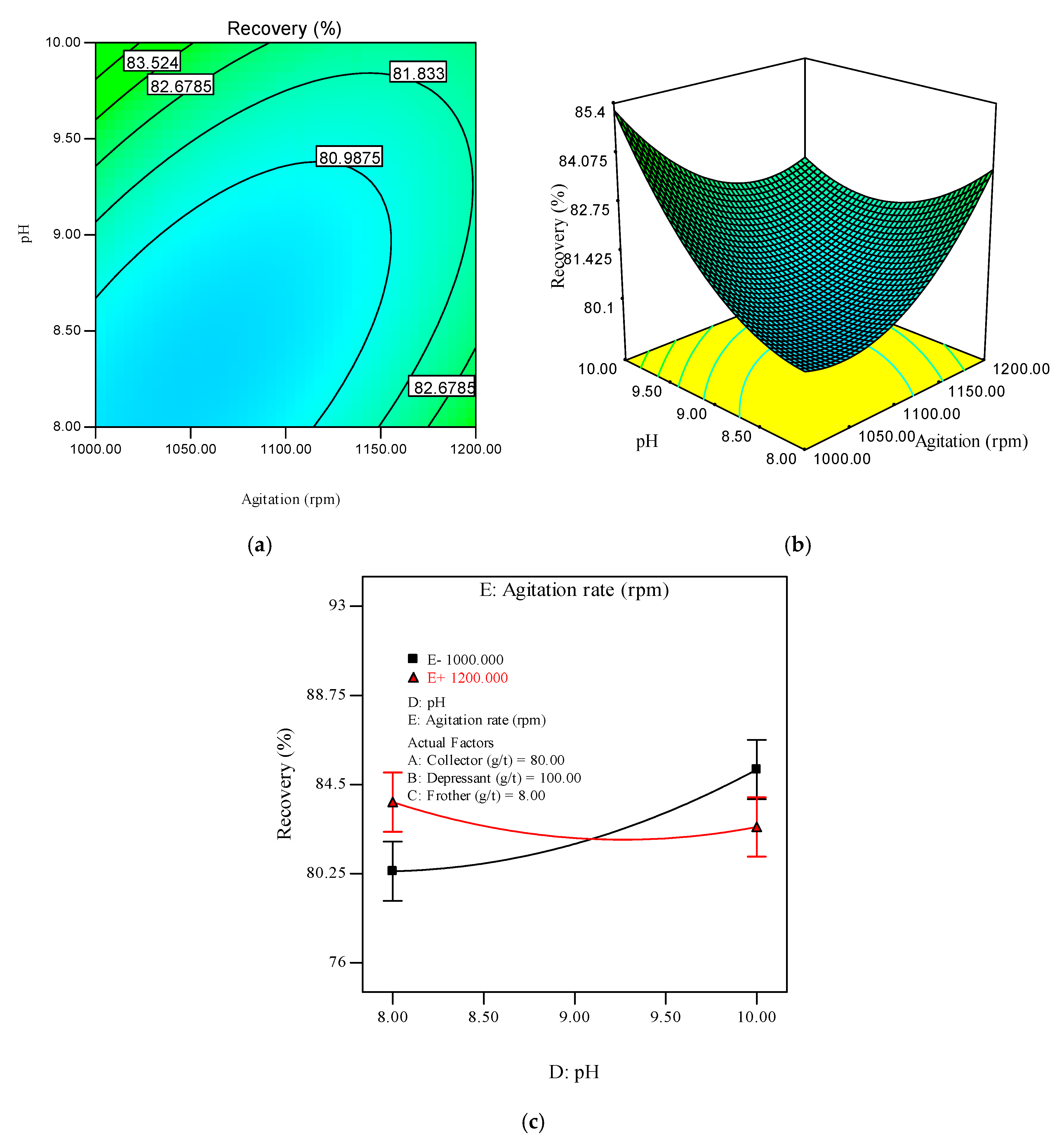
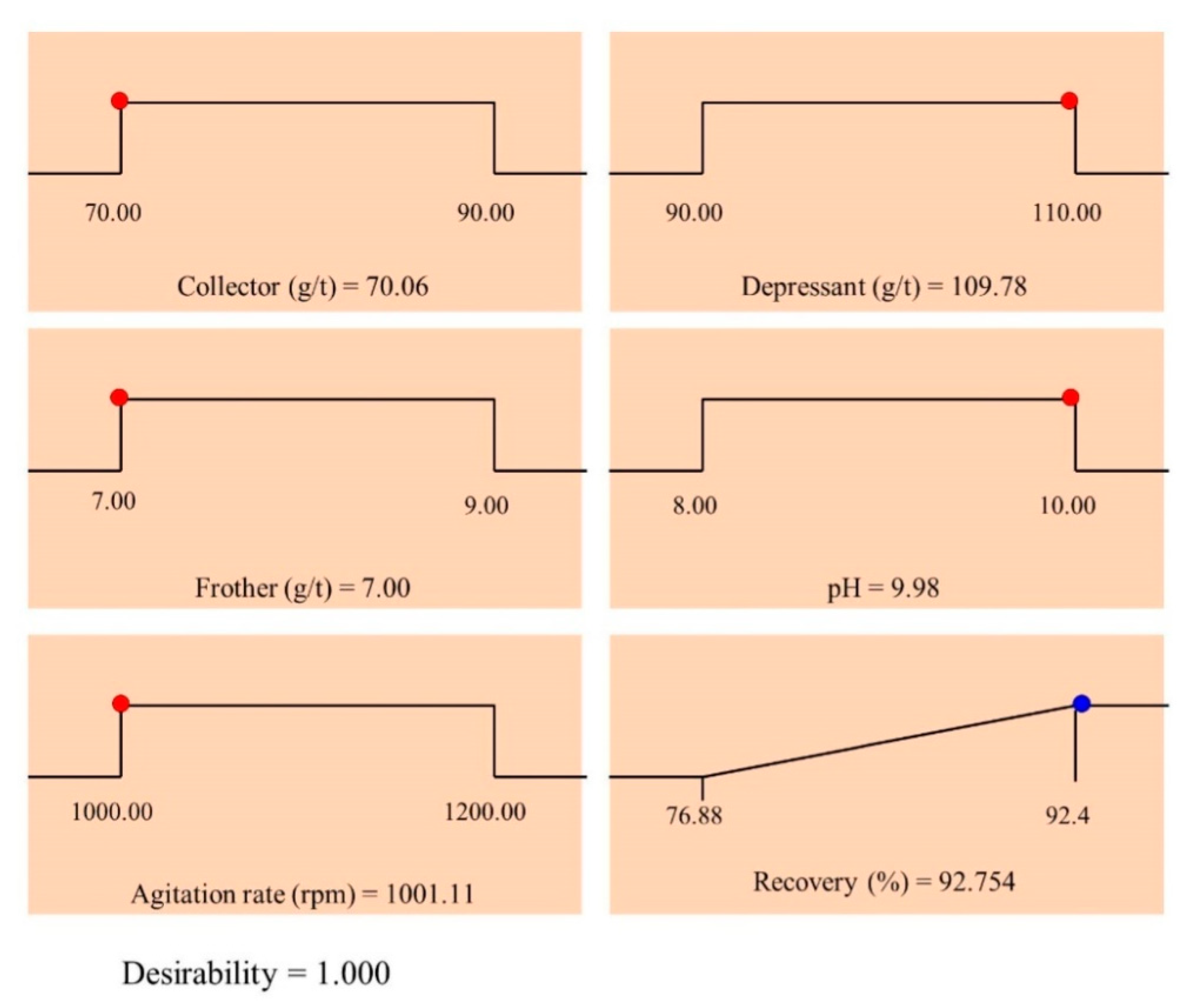
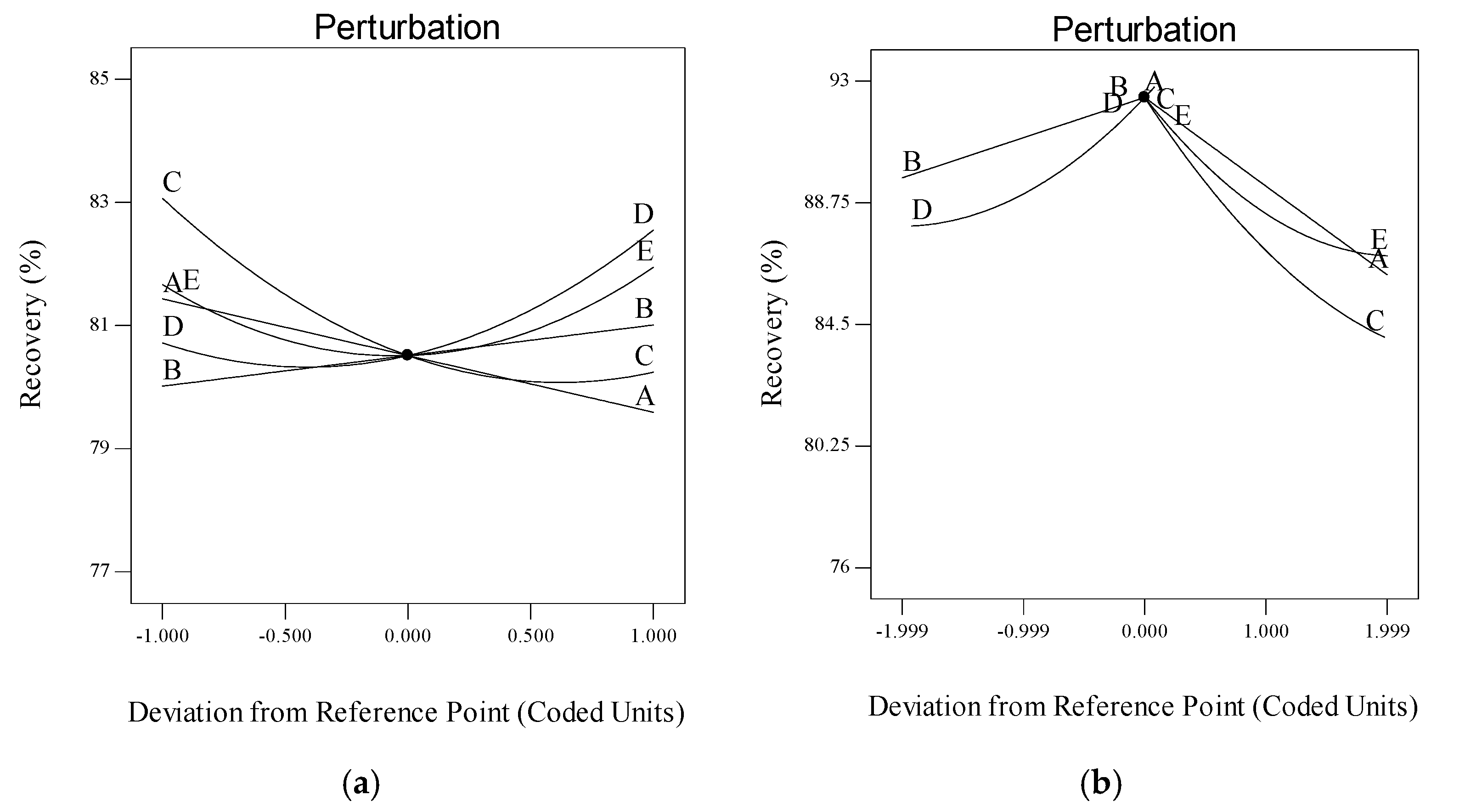
| Composition | SiO2 | CaO | Fe2O3 | K2O | MnO | TiO2 | BaO | Al2O3 |
| Content | 52.10 | 6.90 | 6.34 | 4.52 | 0.21 | 0.71 | 0.09 | 17.64 |
| Composition | SO3 | P2O5 | MgO | Sr | Na2O | Cu * | L.O.I ** | |
| Content | 0.19 | 0.61 | 2.71 | 0.11 | 2.66 | 0.42 | 4.79 |
| Compound | Chemical Composition | S-Q | System |
|---|---|---|---|
| Anorthite, sodian, ordered | (Ca,Na)(Al,Si)2Si2O8 | 16.4 | Triclinic |
| Albite, calcian, ordered | (Na,Ca)Al(Si,Al)3O8 | 13.2 | Triclinic |
| Microcline, intermediate | KAlSi3O8 | 11.7 | Triclinic |
| Sanidine, disordered | K(Si3Al)O8 | 10.5 | Monoclinic |
| Orthoclase | KAlSi3O8 | 9.4 | Monoclinic |
| Magnesioferrite, high, syn | MgFe2O4 | 7.0 | Cubic |
| Diopside, aluminian | Ca(Mg,Fe,Al)(Si,Al)2O6 | 5.8 | Monoclinic |
| Calcite, syn | CaCO3 | 5.3 | Hexagonal |
| Magnetite | FeO·Fe2O3 | 4.4 | Cubic |
| Montmorillonite-14A | Na0.3(Al,Mg)2Si4O10(OH)2·xH2O | 3.1 | |
| Bytownite, low | 0.23NaAlSi2O8·0.77CaAl2Si2O8 | 2.5 | Triclinic |
| Andesine, low | 0.62NaAlSi2O8·0.38CaAl2Si2O8 | 2.4 | Triclinic |
| Chlorite | (Mg,Fe)5(Al,Si)5O10(OH)8 | 2.3 | Monoclinic |
| Biotite-2 ITM1 RG | KMg3(Si3Al)O10(OH)2 | 2.1 | Monoclinic |
| Hematite | Fe2O3 | 2.0 | Hexagonal |
| Kaolinite 1T | Al2Si2O5(OH)4 | 1.9 | Triclinic |
| Sieve Size (µm) | Mass Retained on Each Sieve (g) | % Weight Retained on Each Sieve | Cumulative % Weight Retained | Cumulative % Weight Passing |
|---|---|---|---|---|
| 2000 | 4.38 | 1.41 | 1.41 | 98.59 |
| 841 | 1.85 | 0.59 | 2.00 | 98.00 |
| 595 | 0.71 | 0.23 | 2.23 | 97.77 |
| 400 | 0.50 | 0.16 | 2.39 | 97.61 |
| 297 | 1.05 | 0.34 | 2.73 | 97.27 |
| 210 | 3.50 | 1.12 | 3.85 | 96.15 |
| 149 | 7.20 | 2.31 | 6.16 | 93.84 |
| 105 | 18.60 | 5.97 | 13.13 | 87.87 |
| 74 | 30.30 | 9.72 | 21.85 | 78.15 |
| 53 | 28.50 | 9.14 | 30.99 | 69.01 |
| 37 | 45.10 | 14.97 | 45.46 | 54.54 |
| −37 | 170.03 | 54.55 | 100.00 | 0.00 |
| Sum | 311.72 | 100.00 |
| Factors | Symbol | Coded Levels | ||||
|---|---|---|---|---|---|---|
| −2 | −1 | 0 | +1 | +2 | ||
| Actual Levels | ||||||
| Collector dosage (g/t) | A | 60 | 70 | 80 | 90 | 100 |
| Depressant dosage (g/t) | B | 80 | 90 | 100 | 110 | 120 |
| Frother dosage (g/t) | C | 6 | 7 | 8 | 9 | 10 |
| pH | D | 7 | 8 | 9 | 10 | 11 |
| Agitation speed (rpm) | E | 900 | 1000 | 1100 | 1200 | 1300 |
| Run | A | B | C | D | E | Cu Recovery (%) |
|---|---|---|---|---|---|---|
| 1 | 90 | 110 | 7 | 10 | 1000 | 86.90 |
| 2 | 80 | 100 | 8 | 11 | 1100 | 86.51 |
| 3 | 80 | 100 | 10 | 9 | 1100 | 82.14 |
| 4 | 80 | 100 | 8 | 9 | 1100 | 82.32 |
| 5 | 70 | 110 | 9 | 10 | 1000 | 82.19 |
| 6 | 90 | 110 | 9 | 10 | 1200 | 83.53 |
| 7 | 60 | 100 | 8 | 9 | 1100 | 79.60 |
| 8 | 80 | 100 | 6 | 9 | 1100 | 86.27 |
| 9 | 70 | 90 | 7 | 8 | 1200 | 86.55 |
| 10 | 70 | 90 | 9 | 8 | 1000 | 79.17 |
| 11 | 90 | 90 | 7 | 8 | 1000 | 83.47 |
| 12 | 90 | 90 | 9 | 8 | 1200 | 85.74 |
| 13 | 70 | 90 | 9 | 10 | 1200 | 80.9 |
| 14 | 70 | 110 | 7 | 10 | 1200 | 87.64 |
| 15 | 80 | 100 | 8 | 9 | 1100 | 82.28 |
| 16 | 90 | 110 | 7 | 8 | 1200 | 81.00 |
| 17 | 70 | 90 | 7 | 10 | 1000 | 92.4 |
| 18 | 90 | 90 | 7 | 10 | 1200 | 83.71 |
| 19 | 70 | 110 | 7 | 8 | 1000 | 87.21 |
| 20 | 80 | 100 | 8 | 9 | 900 | 84.64 |
| 21 | 70 | 110 | 9 | 8 | 1200 | 88.34 |
| 22 | 90 | 110 | 9 | 8 | 1000 | 78.35 |
| 23 | 90 | 90 | 9 | 10 | 1000 | 85.03 |
| 24 | 80 | 120 | 8 | 9 | 1100 | 84.32 |
| 25 | 100 | 100 | 8 | 9 | 1100 | 76.88 |
| 26 | 80 | 100 | 8 | 9 | 1300 | 84.98 |
| 27 | 80 | 100 | 8 | 7 | 1100 | 81.74 |
| 28 | 80 | 100 | 8 | 9 | 1100 | 78.98 |
| 29 | 80 | 80 | 8 | 9 | 1100 | 77.45 |
| Source | SS | DF | MS | F-Value | p-Value | |
|---|---|---|---|---|---|---|
| Analysis of Variance (ANOVA) of Models | ||||||
| Mean versus Total | 2.02 × 105 | 1 | 2.02 × 105 | |||
| Linear versus Mean | 94.81 | 5 | 18.96 | 1.61 | 0.1985 | |
| 2FI versus Linear | 136.74 | 10 | 13.67 | 1.32 | 0.3153 | |
| Quadratic versus 2FI | 93.75 | 5 | 18.75 | 3.64 | 0.0517 | Suggested |
| Cubic versus Quadratic | 21.25 | 5 | 4.25 | 0.64 | 0.6925 | Aliased |
| Residual | 19.99 | 3 | 6.66 | |||
| Total | 2.02 × 105 | 29 | 6977.64 | |||
| Analysis of Lack of Fit | ||||||
| Linear | 264.38 | 21 | 12.59 | 3.43 | 0.2502 | |
| 2FI | 127.64 | 11 | 11.6 | 3.16 | 0.265 | |
| Quadratic | 33.89 | 6 | 5.65 | 1.54 | 0.445 | Suggested |
| Cubic | 12.64 | 1 | 12.64 | 3.44 | 0.2048 | Aliased |
| Pure Error | 7.35 | 2 | 3.67 | |||
| Statistical Analysis Summary of Models | ||||||
| Source | Std. Dev. | R-Square | PRESS | |||
| Linear | 3.44 | 0.2587 | 443.19 | |||
| 2FI | 3.22 | 0.6317 | 1579.43 | |||
| Quadratic | 2.27 | 0.8875 | 873.73 | Suggested | ||
| Cubic | 2.58 | 0.9455 | 14,359.54 | Aliased | ||
| Source | SS | DF | MS | F-Value | p-Value | |
|---|---|---|---|---|---|---|
| Model | 296.79 | 12 | 24.73 | 5.67 | 0.0009 | Significant |
| A-Collector (g/t) | 20.37 | 1 | 20.37 | 4.67 | 0.0461 | |
| B-Depressant (g/t) | 5.93 | 1 | 5.93 | 1.36 | 0.2606 | |
| C-Frother (g/t) | 47.86 | 1 | 47.86 | 10.98 | 0.0044 | |
| D-pH | 20.19 | 1 | 20.19 | 4.63 | 0.0470 | |
| E-Agitation rate (rpm) | 0.47 | 1 | 0.47 | 0.11 | 0.7461 | |
| AB | 13.2 | 1 | 13.2 | 3.03 | 0.1011 | |
| AC | 26.96 | 1 | 26.96 | 6.19 | 0.0243 | |
| CE | 38.6 | 1 | 38.6 | 8.85 | 0.0089 | |
| DE | 36.51 | 1 | 36.51 | 8.38 | 0.0106 | |
| C2 | 35.12 | 1 | 35.12 | 8.06 | 0.0119 | |
| D2 | 33.9 | 1 | 33.9 | 7.78 | 0.0131 | |
| E2 | 45.03 | 1 | 45.03 | 10.33 | 0.0054 | |
| Residual | 69.75 | 16 | 4.36 | |||
| Lack of Fit | 62.4 | 14 | 4.46 | 1.21 | 0.5413 | Not significant |
| Pure Error | 7.35 | 2 | 3.67 | |||
| Cor Total | 366.54 | 28 | ||||
| Std. Dev. | 2.09 | |||||
| R-Squared | 0.8097 | |||||
| Adequate Precision | 9.57 | |||||
| PRESS | 218.84 |
| Σ (%) | ||||||||||
|---|---|---|---|---|---|---|---|---|---|---|
| 80.97 | 12.78 | 12.03 | 10.31 | 9.75 | 9.38 | 9.06 | 7.20 | 5.44 | 5.39 | 81.34 |
© 2020 by the authors. Licensee MDPI, Basel, Switzerland. This article is an open access article distributed under the terms and conditions of the Creative Commons Attribution (CC BY) license (http://creativecommons.org/licenses/by/4.0/).
Share and Cite
Azizi, A.; Masdarian, M.; Hassanzadeh, A.; Bahri, Z.; Niedoba, T.; Surowiak, A. Parametric Optimization in Rougher Flotation Performance of a Sulfidized Mixed Copper Ore. Minerals 2020, 10, 660. https://doi.org/10.3390/min10080660
Azizi A, Masdarian M, Hassanzadeh A, Bahri Z, Niedoba T, Surowiak A. Parametric Optimization in Rougher Flotation Performance of a Sulfidized Mixed Copper Ore. Minerals. 2020; 10(8):660. https://doi.org/10.3390/min10080660
Chicago/Turabian StyleAzizi, Asghar, Mojtaba Masdarian, Ahmad Hassanzadeh, Zahra Bahri, Tomasz Niedoba, and Agnieszka Surowiak. 2020. "Parametric Optimization in Rougher Flotation Performance of a Sulfidized Mixed Copper Ore" Minerals 10, no. 8: 660. https://doi.org/10.3390/min10080660
APA StyleAzizi, A., Masdarian, M., Hassanzadeh, A., Bahri, Z., Niedoba, T., & Surowiak, A. (2020). Parametric Optimization in Rougher Flotation Performance of a Sulfidized Mixed Copper Ore. Minerals, 10(8), 660. https://doi.org/10.3390/min10080660







